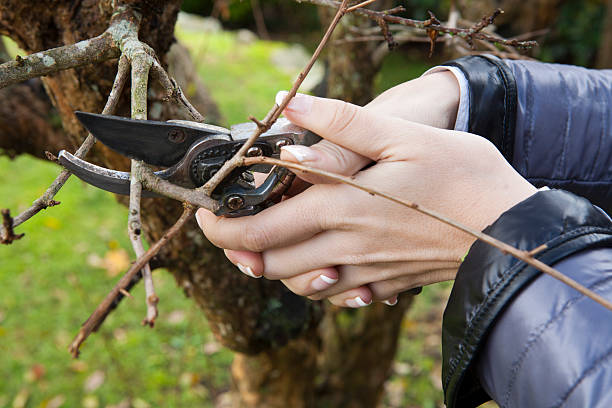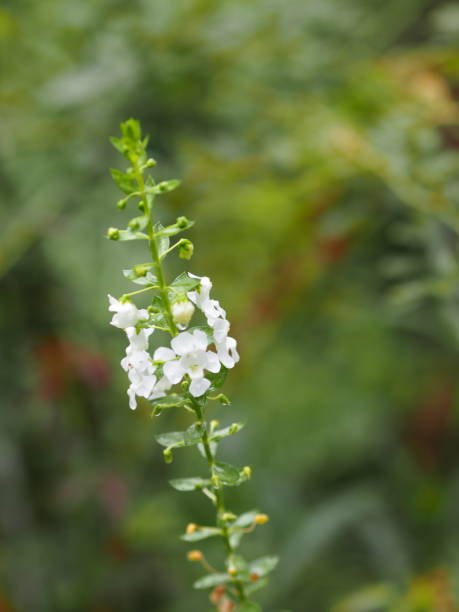How To Prune Angelonia?
Pruning angelonia is very simple. You just need to know when and where to prune. Deadhead those dying flowers and cut down diseased stems to encourage new growth. It also protects the plant from disease and pests. This drought-tolerant plant prefers moist soil with its green foliage and year-round survival in frost-free zones. There are numerous purple, pink, or white flowers on the plant, which bloom along the stem. Learn more about how to prune them. Keep reading!

Table of Contents
Pruning Angelonia
- Prevent the development of seeds by deadheading spent flowers. When you need a few random blooms, you can pinch them off with your fingers. The top set of leaves should be removed if there are several spent flowers on a stem.
- Cut down any broken, dead, or diseased stems to the ground. If a stem is lying on its side, it should be trimmed back to the plant’s base.
- To encourage new growth, pinch or prune lanky stems. Stems long, leggy, or otherwise unattractive should be cut back to the ground if the plant is particularly thick.
- Plants should be pruned more heavily in the spring and fall when growth has ceased. During the rest of the year, prune lightly to remove dead or damaged stems.
When to Prune
Natural processes are at work in your plant, and you can’t do anything about them. This is the beginning of the seed spreading stage as the blooming process ends. You need to cut and remove those dried purple-blue clusters of flowers now. Removing them before they’ve dried is not recommended.
Where to Prune
Either directly beneath or slightly below the dried-out flower clusters. Your Angelonia doesn’t have to be halved in size if you don’t cut under the dead flower exactly. To help you out, I’ve drawn orange arrows to indicate where you should make the cuts.
Should Angelonia Be Cut Back?
Midsummer is the ideal time to prune back sprawling Angelonias to about half their original height. A new crop of flowers will soon be blooming. Other times may be suitable too, but you will have decided if Angelonias are reaching their natural maximum size by the end of summer. If this is not your case, go ahead and cut them back any time of year when they get a little out of hand structurally or in height.
Encourage bushiness and branching by pinching out the tips of the main stems when plants are young, at around 6 inches. You can use Angelonia in containers or as a groundcover or bedding plant. To encourage a second bloom, cut back by half after the first one has faded.

Propagation of Angelonia Plants Simple from Stem Cuttings Indoors
- Take a stem cutting that has not bloomed and remove all leaves except the top two. Stem cuttings lacking roots are unable to support a substantial number of leaves.
- Cut off the bottom tip of the cutting to reveal the cutting’s fresh white and green tissue. You should not plant a stem cutting with a dark spot because it may not grow properly.
- Before planting the cutting, soak the bottom tip in rooting hormone and insert it into some good, well-drained potting soil.
- Drainage holes should be large enough to fit the pot.
- Soak the pot in the shade for five to six inches until it reaches its full height. This sign indicates that the cutting has started rooting and is receiving regular sunlight.
- After a month of growth, bring the pot outside for two to three hours a day to acclimate the plants to the weather. You can finally plant that thing in the garden after a week of hard work!
Does Angelonia Come Back Every Year?
The perennial Angelonia grows in hardiness zones 8 through 11. It is usually root-hardy in Zone 8. At home, it’s a perennial that can be moved indoors when the weather gets chilly. It is considered drought-tolerant and can survive in most soils. It dislikes wet soil and too much water for too long, but it doesn’t require a lot of fertilizer.
Angelonia prefers full sun to part shade (like eastern parts of the U.S.). When you are planting this plant in an area that typically receives rain, it is sure to keep your plants watered while they prepare themselves up indoors.
